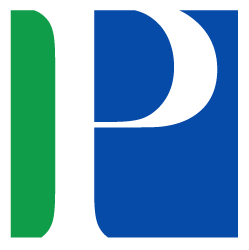Development of Physics 1 online module using Maasive Open Online Course (MOOC)
Abstract
Aim: This research aimed to better understand first-year Physics instructors and their students’ challenges at University Tun Hussein Onn Malaysia (UTHM).
Method: The ADDIE Model was a guiding principle for the duration of this project’s development and completion. The problem has been identified, which will aid in creating a MOOC online module to address it. A quiz is included at the end of each chapter of the online module to ensure that students have fully grasped the material covered there. Additionally, a second questionnaire was given out to 60 diploma students to gauge their opinion of the developed online module.
Findings: The positive responses to the second survey indicate that the online module has improved students’ grasp of the fundamentals of Physics 1. This Physics 1 online module should be adapted into a novel application, like a compact disc, so students can use it without an internet connection.
Implications/Novel Contribution: Because of this online module, professors can spend less time on theoretical explanations and more time on interactive exercises, allowing their students to gain a deeper grasp of the material covered in class.
References
Ashaari, M. F. (2017). The adoption and adaptation of online learning models in the framework of online dawah.
International Journal of Humanities, Arts and Social Sciences, 3(1), 1-8. doi:https://doi.org/10.20469/ijhss.3.20001-1
Bungadara, A. M. (2016). Development of physic learning instrument based on the problem solving skill. Journal of Education and Practice, 7(6), 45-50.
Carlone, H. B. (2004). The cultural production of science in reform-based physics: Girls’ access, participation, and resistance. Journal of Research in Science Teaching, 41(4), 392-414. doi:https://doi.org/10.1002/tea.20006
Farid, S., Luqman, M., Tariq, S., & Ahmad Warraich, I. (2014). An analysis of learning behavior and academic achievement: A case study of Bahauddin Zakariya University Multan. Pakistan Journal of Social Sciences, 34(1), 45-50.
Haris, A. (2017). Learning system management based on teaching factory in Indonesia. Journal of Advanced Research in Social Sciences and Humanities, 2(4), 237-248. doi:https://doi.org/10.26500/jarssh-02-2017-0402
Hashim, H., Salam, S., & Mahfuzah Mohamad, S. N. (2017). Investigating learning styles for adaptive Massaive Open Online Cource (MOOC) learning. Journal of Advances in Humanities and Social Sciences, 3(5), 282-292. doi:https://doi.org/10.20474/jahss-3.5.4
Häussler, P., & Hoffmann, L. (2000). A curricular frame for physics education: Development, comparison with students’ interests, and impact on students’ achievement and self-concept. Science Education, 84(6), 689-705. doi:https://doi.org/10.1002/1098-237x(200011)84:6<689::aid-sce1>3.0.co;2-l
Marušic, M., & Sliško, J. (2012). Many high-school students don’t want to study physics: active learning ´ experiences can change this negative attitude! Revista Brasileira de Ensino de Física, 34(3), 1-11. doi:https://doi.org/10.1590/s1806-11172012000300013
Nashon, S. M. (2003). Teaching and learning high school physics in Kenyan classrooms using analogies.
Canadian Journal of Math, Science & Technology Education, 3(3), 333-345. doi:https://doi.org/10.1080/14926150309556572
Pappano, L. (2012). The year of the MOOC. The New York Times, 2(12-17), 2012.
Pence, H. E. (2012). When will college truly leave the building: If MOOCs are the answer, what is the question? Journal of Educational Technology Systems, 41(1), 25-33. doi:https://doi.org/10.2190/et.41.1.c
Sheppard, K., & Robbins, D. M. (2002). Lessons from the committee of ten. The Physics Teacher, 40(7), 426-431. doi:https://doi.org/10.1119/1.1517887
Tobias, S., & Birrer, F. A. (1999). Who will study physics, and why? European Journal of Physics, 20(6), 365-372. doi:https://doi.org/10.1088/0143-0807/20/6/302
Waard, D. (2011). Explore a new learning frontier: MOOCs. Retrieved from https://urlzs.com/RyHMU (Accessed on 14 September, 2015)

This work is licensed under a Creative Commons Attribution-NonCommercial 4.0 International License.











.png)









